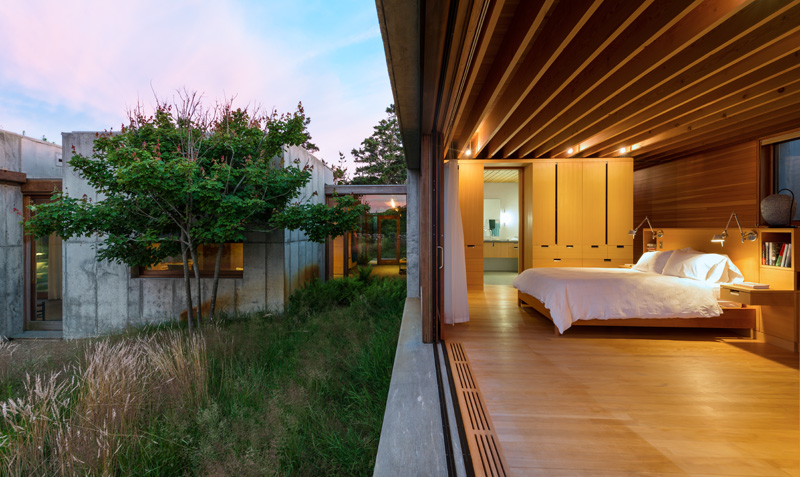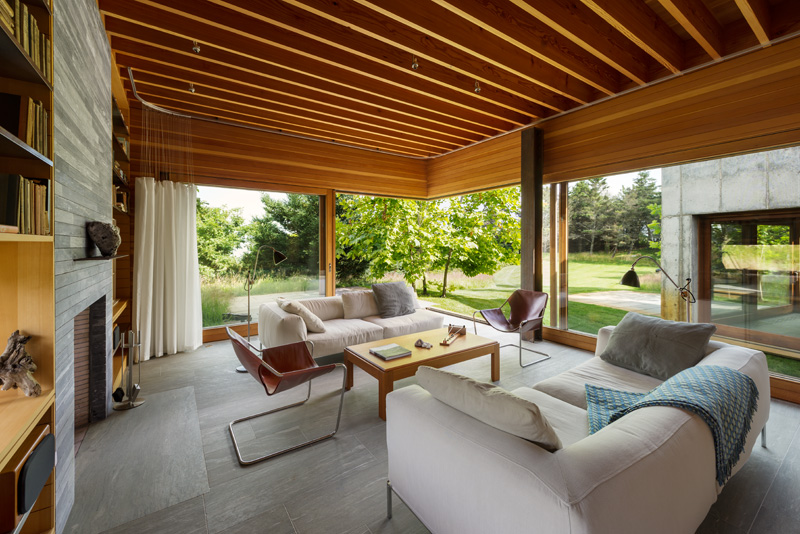Photography by Chuck Choi
Peter Rose + Partners have designed the East House, a home located in Chilmark, Massachusetts.
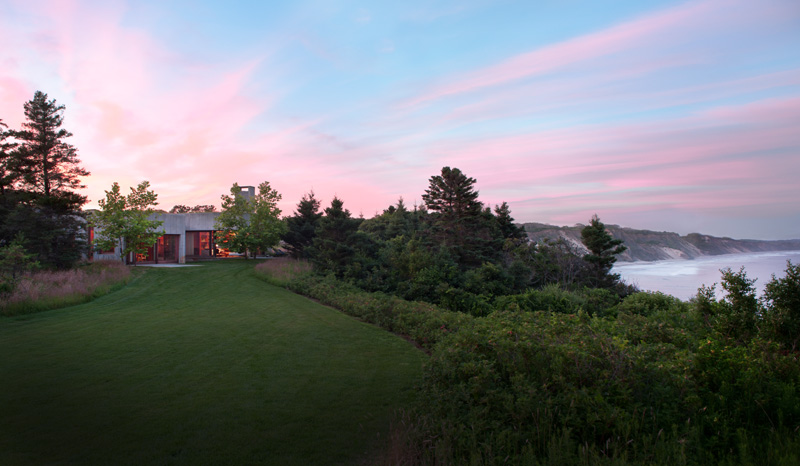
Photography by Chuck Choi
A description from Peter Rose + Partners
Nestled into the native shrubs on the Martha’s Vineyard coastline, East House’s site-cast concrete façade welcomes the tendrils of coastal vines, while providing a robust face to New England’s coastal weather.
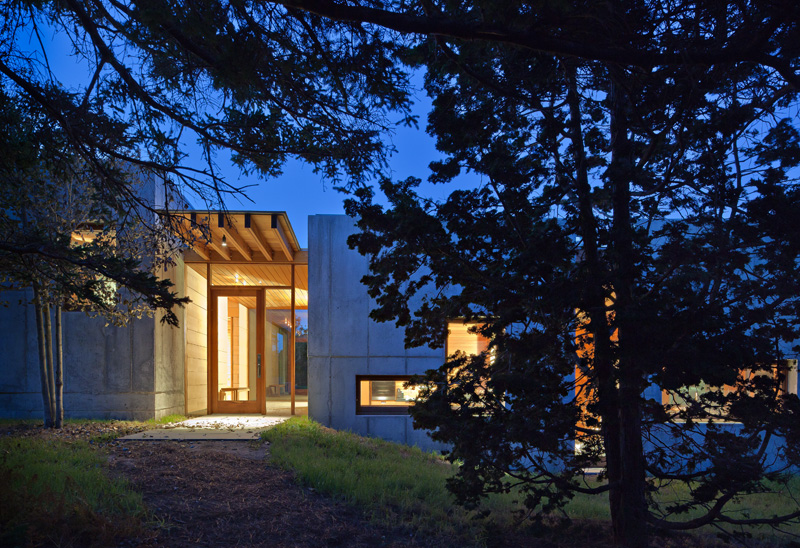
Photography by Matthew Snyder
The ten-inch thick concrete walls are cast in the form of a collection of concrete boxes, relieved with sustainably harvested Spanish Cedar window frames, and oriented to achieve both subtle and dramatic responses to the landscape.
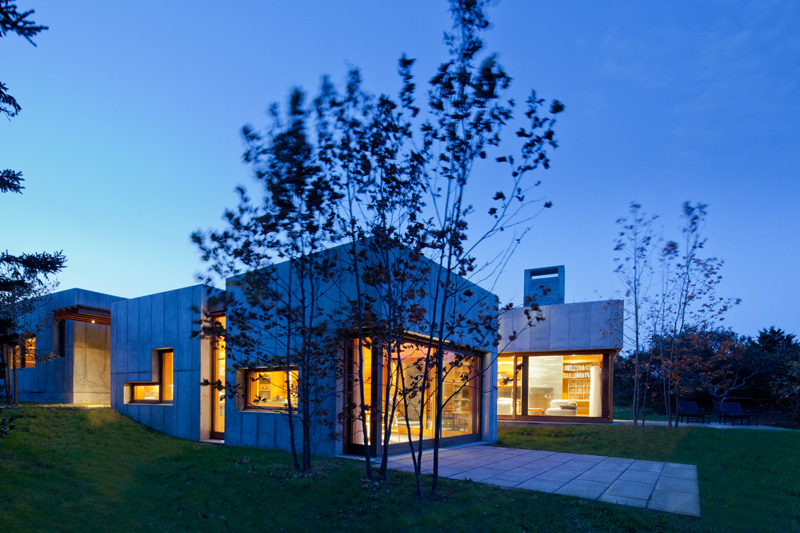
Photography by Matthew Snyder
During design, a commissioned study revealed a rate of coastal bluff erosion that made both client and architect extremely uncomfortable about the siting of the residence.
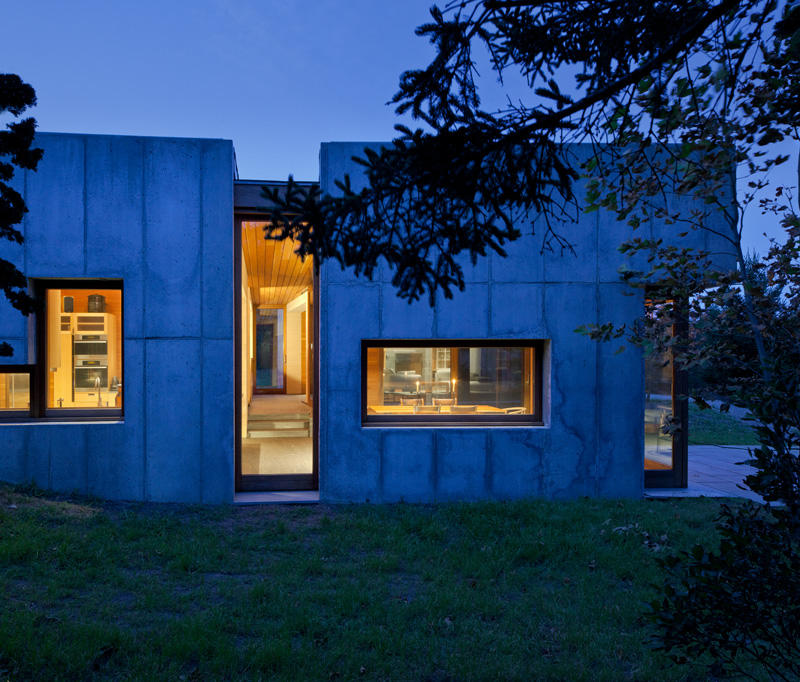
Photography by Matthew Snyder
The solution was to cast the floors, formerly wood framed, in concrete, making each box a three- or four-sided structural unit that could be individually lifted and moved to a location far from the bluff should erosion occur.
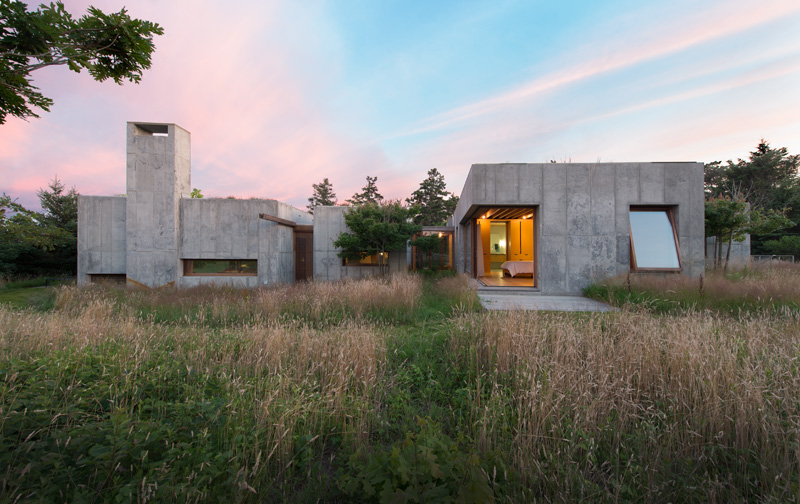
Photography by Chuck Choi
The 4,000 square foot house is thus divided into concrete boxes, individually liftable with all interior finishes in place, and interstitial corridors, light wood framed zones that are easily removed and rebuilt in the event the building is moved.
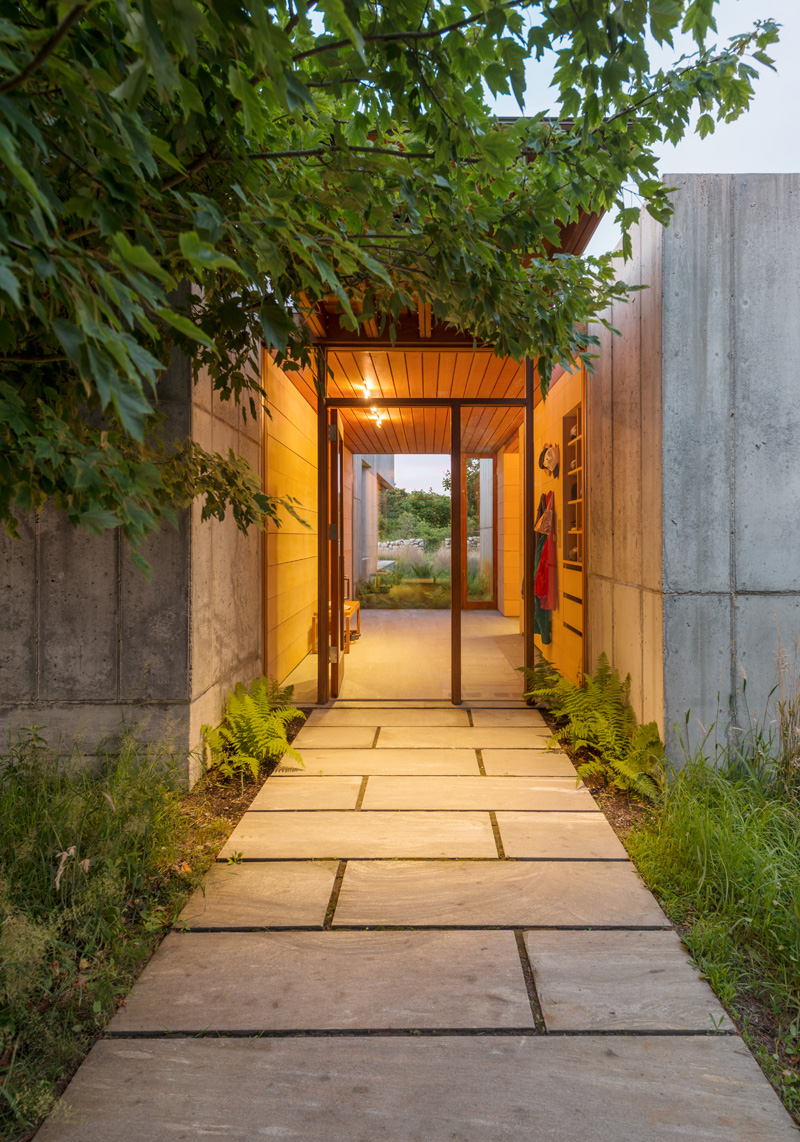
Photography by Chuck Choi
Each box has a rugged concrete exterior, and is finished on the interior with stone floors, and Douglas Fir and Alaskan Cedar planked walls, which are soft to touch but extremely durable in the rough coastal weather.
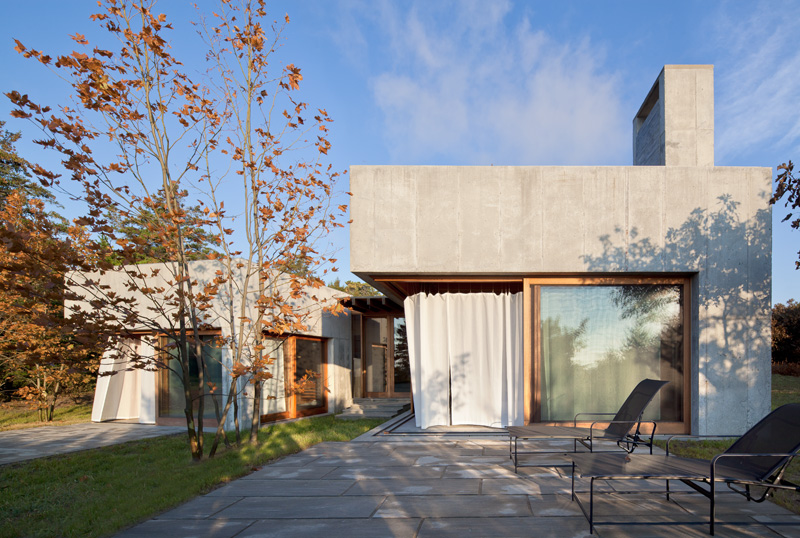
Photography by Matthew Snyder
Circulation travels along the interior figure of the boxes, through interstitial spaces both rough framed and finished in wood, and is choreographed to an ever more revealing experience of the site. Strategic through-views to surrounding greenery direct visitors from the entrance to a library and living area.
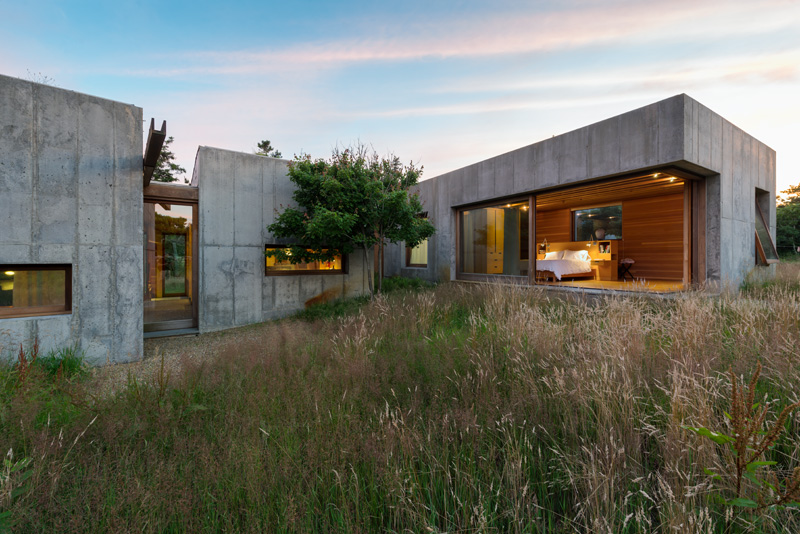
Photography by Chuck Choi
Embedded in the natural landscape, East House is nearly invisible from points further up the slope. The concrete shell is cantilevered over the landscape, allowing for expanses of glass along five walls.
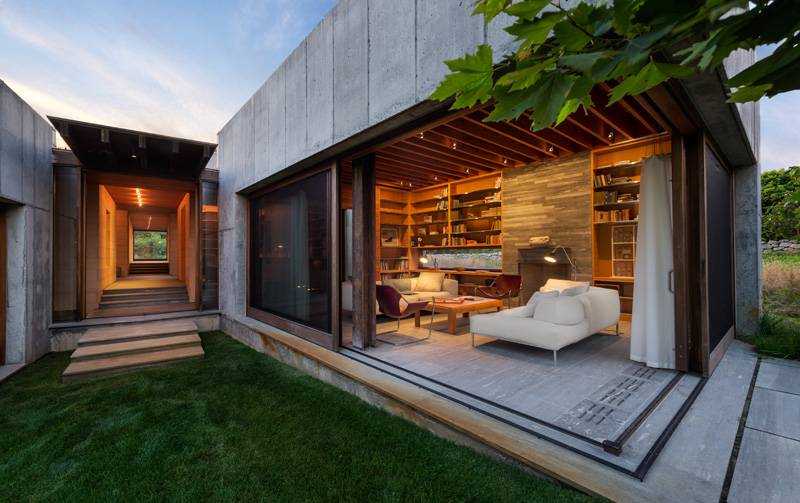
Photography by Chuck Choi
Operable windows pull back, and the gap between concrete units amplifies the sound of the ocean, bringing it and sea breezes through the entire house.
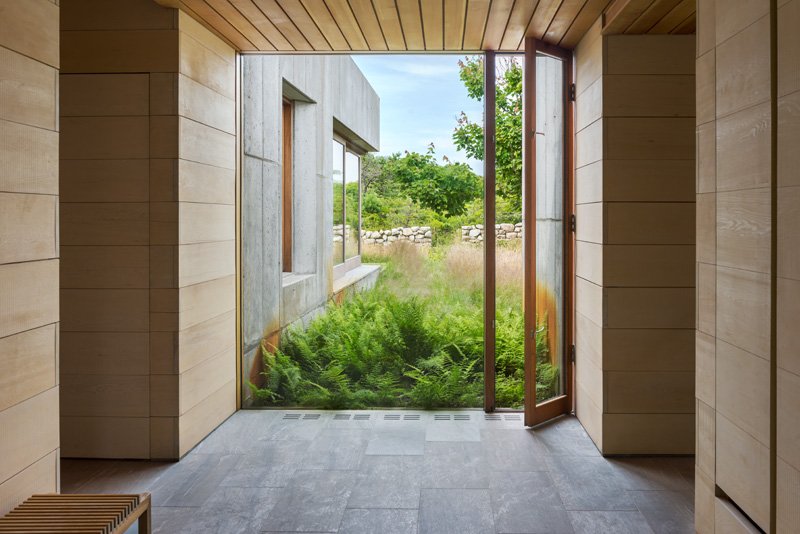
Photography by Chuck Choi
A planted roof caps each box individually, mitigating run-off, while further integrating the building visually in the lush landscape.
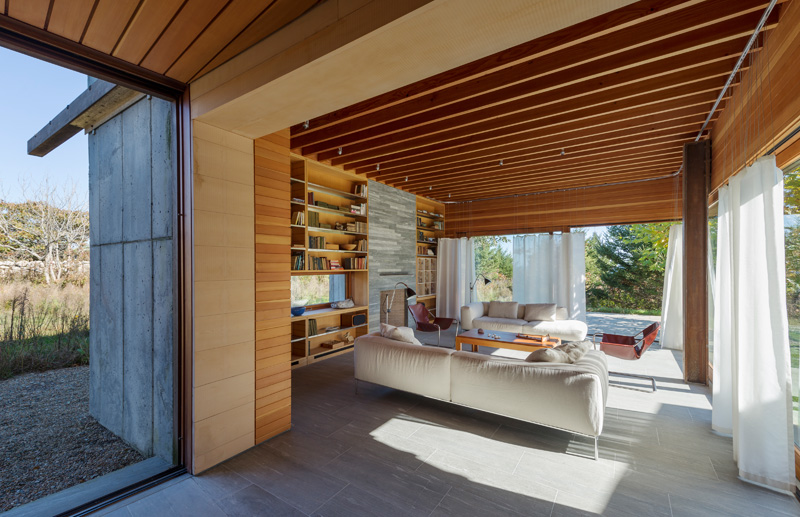
Photography by Chuck Choi
Rainwater is collected in the interstitial roofs, directed to a single Mahogany flue, and cast into a below-ground cistern for use in irrigation.
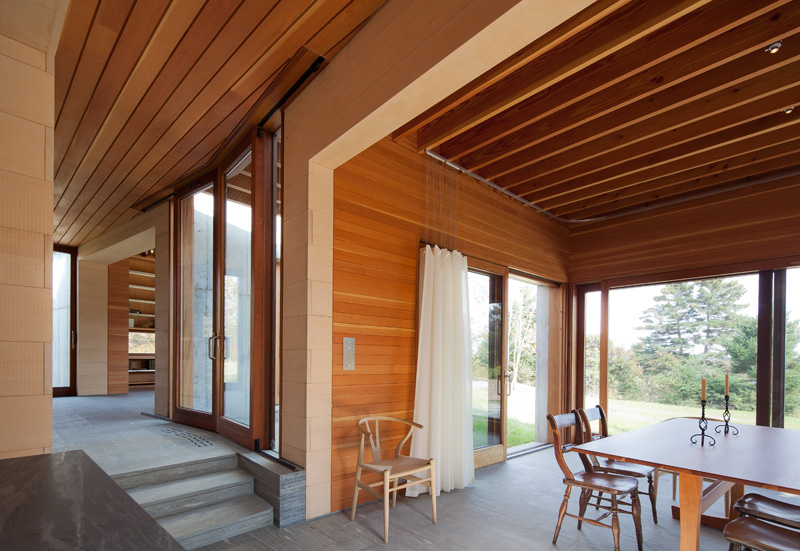
Photography by Matthew Snyder
Geothermal wells use the earth’s thermo-conductivity to temper living spaces, vastly reducing the size and cost of HVAC equipment.
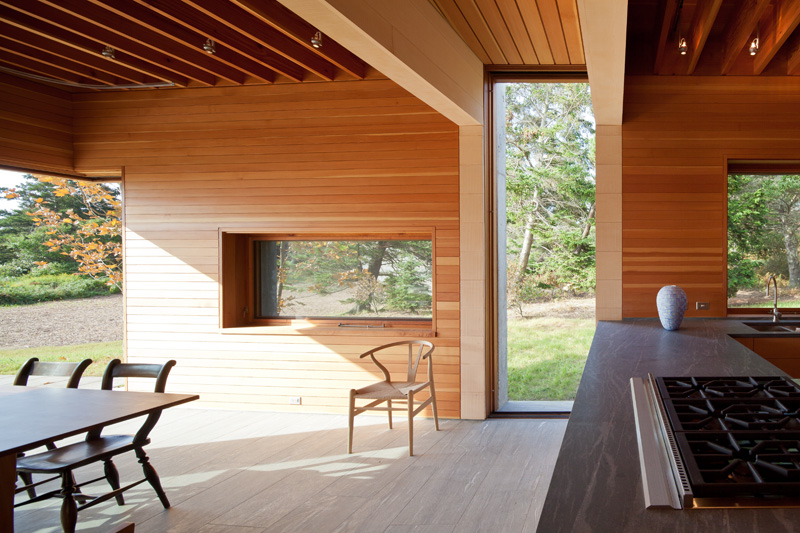
Photography by Matthew Snyder
With radiant heating, calibrated window openings, and the thermal mass of concrete, the house creates natural ventilation and buffers summer heat gain.
